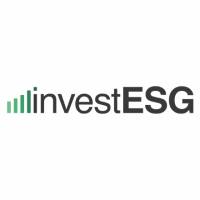SDGs: Implementation, Impact Measurement and Greenwashing | Charlotte Portier | GRI

Investors are increasingly seeking investment opportunities that can make a credible contribution to the realization of the SDGs. However, with a few notable exceptions – mainly green bonds – there is currently a lack of options for institutional investors interested in making a meaningful allocation of capital. That is something that need to change, as the focus on how to achieve a sustainable recovery from COVID-19 increases.
| How can investors best spot and avoid SDG-washing and related misleading practices?Effective investment is predicated not just on consideration of reported information but also active engagement with investee companies. As investors increasingly focus on SDGs and impact, they are better able to distinguish between companies that are genuinely committed to positive SDG impact and those that are simply telling a good story.At GRI, we have developed guidance to support companies in effectively integrating the SDGs into their reporting process, ensuring they disclose relevant and reliable data on SDG impact. It took some time for UN Member States themselves to set up efficient implementation systems for the SDGs. So, we can expect companies to also go through a few stages before they fully understand the Goals and associated targets. As with GRI reporting, companies need to disclose timely and quality data on their impacts and how they relate to the SDGs.To meet the challenges of the SDGs, responsible investors should think like universal owners. In other words, they should look beyond how ESG risks and opportunities affect the risk-return profile of their investment portfolio, and into how their portfolio affects the broader objectives of society, creating real-world impact – as embodied by the SDGs. How does GRI support investors in contributing to SDGs, and what limitations should the users of GRI Standards be aware of? It’s clear that, to make informed investment decisions in active, passive or rule-based investment strategies, investors need comparable SDG information produced in line with widely accepted methodologies.GRI provides that framework for companies to report on their SDG impacts. This in turn supports investors in their capital allocation decisions and strategies - both where there are positive SDG impact or to minimise negative impacts.A recent article in Responsible Investor suggested that “tax justice should be the 18th SDG”, given the importance of tax revenues in enabling sustainable development. GRI’s recently launched Tax Standard has an role here, providing companies with a globally applicable tool for country-by-country reporting on tax.Achieving the SDGs can present great business opportunities, but the opposite is also true. Not reaching those Goals can have major negative consequences for companies and their finances and, therefore, investor returns. This is why investors need credible and high-quality data on the positive and negative effects that a business has on contributing to the SDG targets.
Progress and impact measurement is key to attaining SDGs, however, the implementation remains challenging. How can investors and companies benefit from the GRI Standards in this regard, and how does the GRI approach differ from other standards and tools?Reporting on the SDGs can help develop instruments that leverage mainstream investment tools alongside listed equity, such as bonds and private equity. It can also help companies develop an ‘SDG impact thesis’ — an explanation on how they contribute to the SDGs — alongside their traditional investment thesis.GRI provides tools and guidance for organizations to integrate the SDGs within their reporting cycle, relying on the GRI Standards and other international frameworks. We did not reinvent the wheel but enable companies and investors to integrate the Goals in existing processes. Our Standards are the only framework that cover all the SDGs and our principles are aligned with the underlining purpose of the SDGs. Another key issue in SDG progress and impact assessment is materiality mapping. What approach would you recommend investors and companies aiming to contribute to the transition to an SDG-aligned world?Investors know that not all 17 SDGs will be equally relevant to all companies. That’s why reporting outputs should reflect the relevance of the Goals to the business and, ideally, implications for business strategy and financial performance.GRI’s recommendation for a materiality assessment of SDG reporting is to include the SDGs topics at this stage. We advise companies to consider both risks to people and the environment and developing beneficial products, services or investments connecting to relevant SDG targets. Positive and negative impacts as well as actual and potential impacts must be considered.This materiality assessment cannot be achieved without robust stakeholder engagement, as supported through the GRI Standards. This engagement ensures companies take account of all stakeholder perspectives, including investors, and ensure that the disclosure information is relevant and comprehensive. further information:SDG Reporting - Investors and SDGs[embed]https://www.youtube.com/watch?v=wBNXTDSAedI&list=PLqkvnJU0lLilzZDtnUXkK7xfhRMDF2wRW&index=3[/embed] aboutCharlotte Portier has a background in international law and human rights law. In her position with GRI, she focuses on the role of the private sector in contributing to the SDGs. She began her career in Brussels, working for European networks, defending and advocating for the rights of persons with disabilities and social service providers. She holds a LL.M. in International Human Rights Law from Maastricht University.
